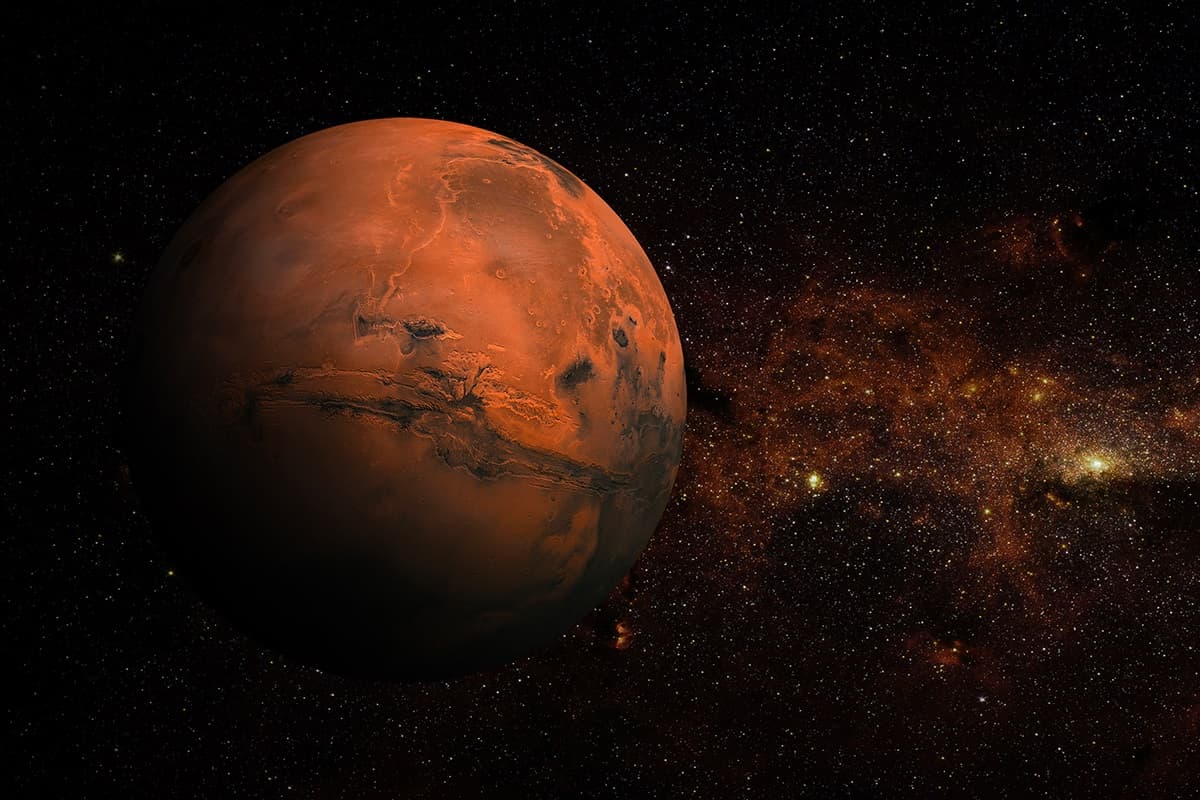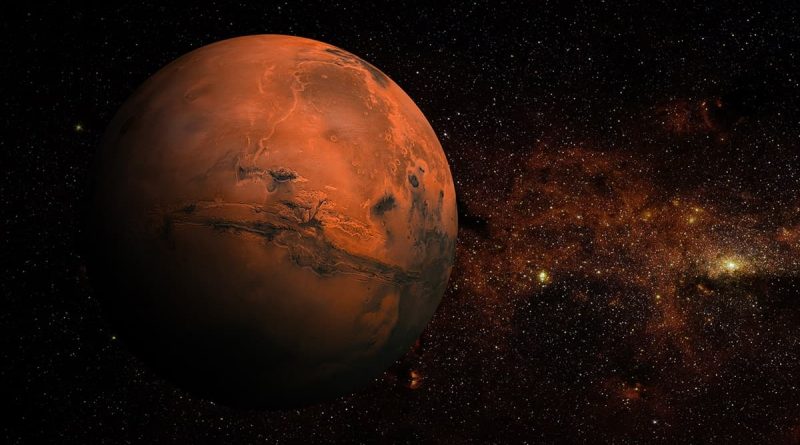Artificial intelligence could be our best chance of finding signs of life on Mars.

Artificial intelligence has once again demonstrated its power and this time it has come to the aid of astronomers to provide a definitive answer on the likelihood of life on Mars.
Talking about finding signs of life on the planet Mars is an exciting subject, but first we need to know where to look. Getting to Mars is difficult and for this reason we need to ensure we make the best use of available opportunities and that our journey will not be in vain.
The dry land surface of Mars is approximately the size of our blue planet’s land and has only one major difference. If we throw a rock towards the Earth, the chances of it landing somewhere that has life are very high. However, the history of life on Mars is a big question mark for which we still have no answer.
Artificial intelligence and machine learning can reduce the difficulty of searching for life on Mars. According to Science Alert , an international team of researchers led by SETI Institute’s Kimberly Warren-Rhodes, has demonstrated that these tools can help humans find signs of life on this planet by identifying hidden patterns in geographic data.
According to Warren-Rods, their team’s framework allows them to combine the power of statistical ecology with machine learning. This combination helps researchers discover and predict patterns and laws that sustain nature and spread itself in the harshest terrains on Earth. He adds, ‘We hope other astronomy teams also adapt to our approach for mapping other habitable locations and biotic effects. These models help us design custom patterns and road maps to guide the Mars explorers towards places with the highest probability of past life, although these places may be rare or far-sighted.’
One of the most similar areas to Mars’ arid plains on Earth is the Atacama Desert in Chile. Atacama is one of the driest regions on Earth and has not seen any rain for decades. Even in this dry and rainless desert, signs of life can be found in cavities and underground.
Warren-Rods and his colleagues focused their studies on an area on the border between the Atacama Desert and the Altiplano plateau. This area, known as the Salar de Pajonales, is an ancient riverbed and one of the most Earth-like environments to Mars. The altitude of 3541 meters causes it to be exposed to more UV radiation. Lack of oxygen, dryness, and salinity are other characteristics of this area. However, it is possible to find some forms of life there living in mineral structures.
A map of the probability of the existence of biological features generated by artificial intelligence.
Researchers collected 7,765 images and 1,154 samples with very high accuracy from an area of ââ2.78 square kilometers. The purpose of this work was to find biological traces to prove the existence of photosynthetic microbes in this area. These images included cartenoids and chlorophyll pigments that showed the rocks in pink or green.
Researchers also utilized unmanned aircraft to simulate images sent from satellites orbiting Mars and employed three-dimensional topographic maps. In the next stage, this data was fed to convolutional neural networks (CNNs) to provide the necessary training for artificial intelligence to detect structures with signs of life in this area. Interestingly, despite the nearly uniform mineral composition in this region, CNNs identified patterns of microbial life distribution in this area.
Soft mineral gypsum domes, about 40 percent, and criss-crossed earth with gypsum strips, about 50 percent, were vital. By examining more closely the features of these areas, researchers were able to uncover their tiny target habitats. Their studies showed that high-intensity microbes had been pulled toward portions of the creamy gypsum marble. Gypsum marble is a fine-grained and porous form of gypsum that holds water within it.
Convolutional neural networks provided researchers with the ability to identify biological traces correctly in 87.5% of cases. This figure was about 10% in random searches. These networks reduced the required ground coverage by researchers to 85-97%.
Freddy Callitzyce, a computer scientist at Oxford University in Britain, says: “This model has demonstrated a high predictive ability for the presence of geological materials that are likely to contain biological traces, both for aerial images and centimeter-scale terrestrial data. The results were consistent with objective realities, and there was a strong correlation between the distribution of biological traces and water-related features. ”
Given the findings of this research, it appears that recent approaches have several advantages for us. This approach provides valuable information on life in harsh conditions on Earth and, in addition to helping identify other biological traces on Earth, is also promising for identifying life on Mars.
The research team intends to train their CNNs to identify other biological traces such as stromatolites and halophiles. Stromatolites are fossilized microbial structures that may be billions of years old, and halophiles are organisms that live in extremely salty environments.




